My experience flying to Puerto Rico in the midst of the COVID-19 pandemic
Signing up for credit cards through partner links earns us a commission. Terms apply to the offers listed on this page. Here’s our full advertising policy: How we make money.
Seven years ago, I left my home in Puerto Rico and moved to the mainland U.S. to start my career. Many great things happened since then — I made incredible friends, lived in beautiful cities, and learned plenty about myself and the world. But despite all of that, my heart was still at home where my family lives. So I decided to go back. I was supposed to move back in April, and after a few months of preparation, there was only one thing that could get in my way…a worldwide pandemic. With the entire world coming to a halt, I decided to postpone my move to July. Being based in Charlotte, North Carolina, it was difficult to find direct flights to Puerto Rico because there were so many canceled flights. But about two months into the pandemic, American Airlines resumed their direct flights to San Juan. And I was able to book a direct flight for July 9. After booking, I noticed how quickly the flight started to fill up. American Airlines, as opposed to other airlines, is not leaving the middle seats empty as a way to help enforce social distancing. In fact, the morning after I booked my ticket, I saw that the flight had almost sold out.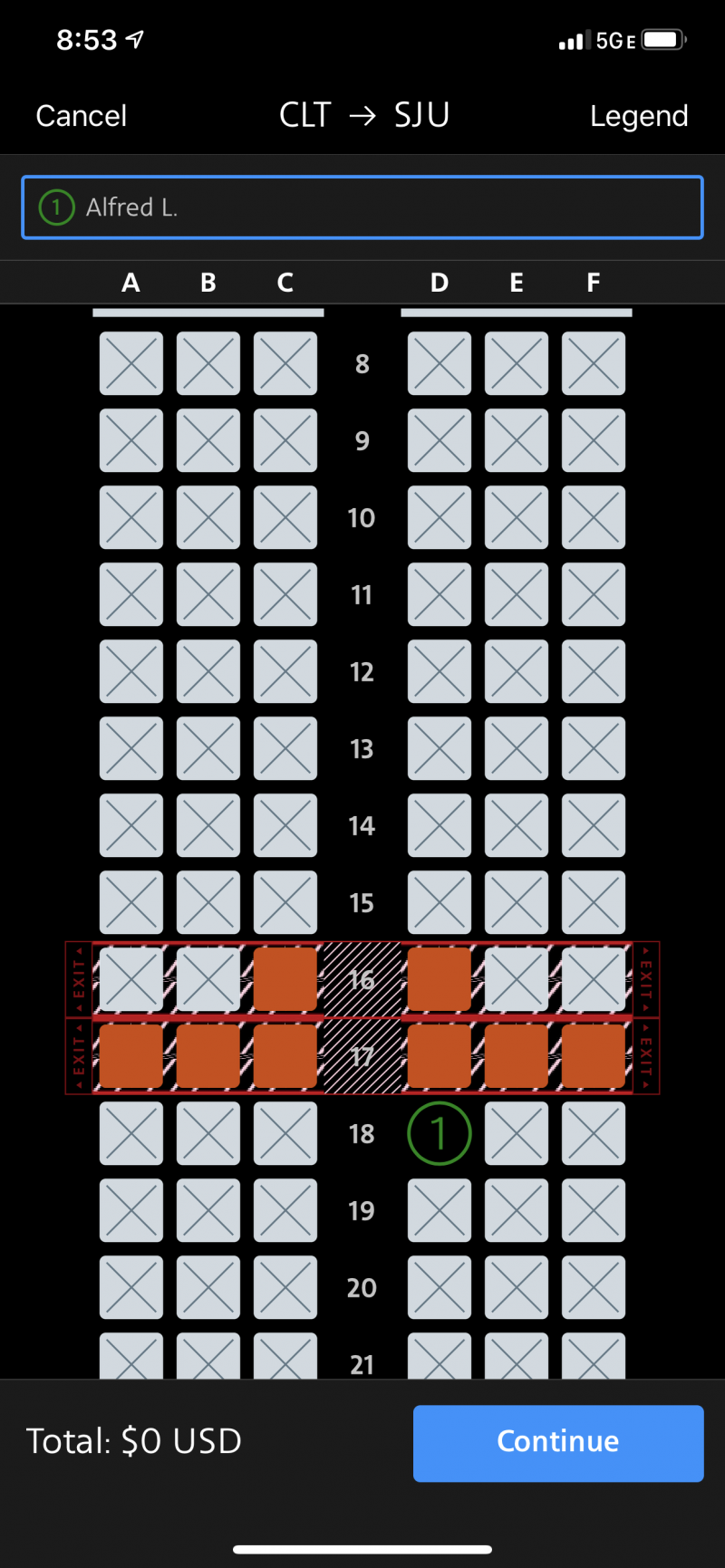
Check-in and security
I had no issues getting to the Charlotte airport. There were plenty of Ubers available and not much traffic. But sadly, inside the airport, things were not the same — at least not as I had imagined they’d be.With most countries restricting travel and most airlines suspending flights, I had envisioned an empty terminal with just a few travelers having to fly out of necessity. That was not the case. For a second, I even forgot about the pandemic as the airport was packed, and everything seemed to be business as usual: the check-in area was busy, and there was a line at the baggage drop area.
Passengers and personnel were wearing facial protection, but social distancing was inconsistent, especially for people waiting in lines.
There were plenty of passengers using the kiosks for check-in, but I elected to use mobile check-in instead. Even though I checked in online, I still had to get in line to drop my bag and was asked to keep my ID in hand.
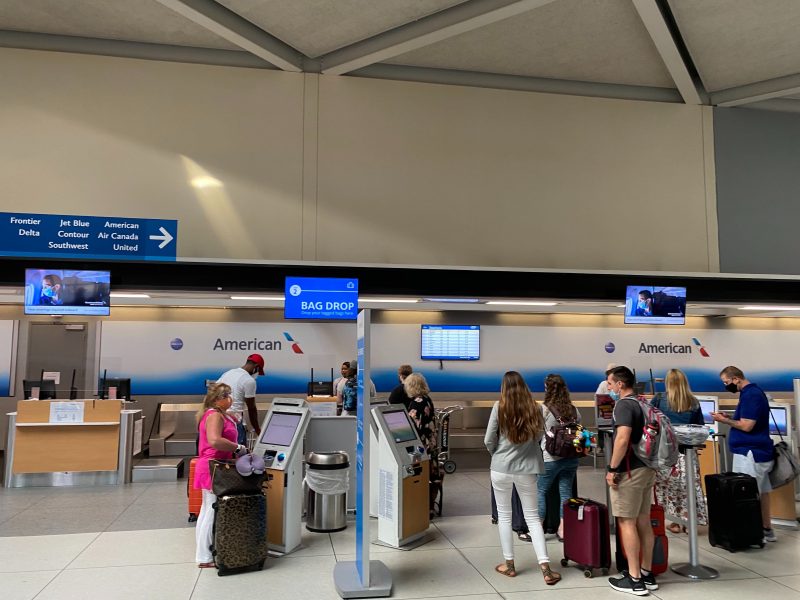
Passing through security was less hectic because all of the security checkpoints were open, and the lines were minimal. So, I didn’t necessarily need to use my TSA PreCheck membership, but it’s always nice to have to avoid having to wait in line. At the checkpoint, the TSA agent asked for my ID and then asked that I lower my mask to see my face. There wasn’t much out of the ordinary about the process.
Inside the terminal
Inside the terminal, things were busy too. Most breakfast places were open, with only a few stores being temporarily closed due to the pandemic.
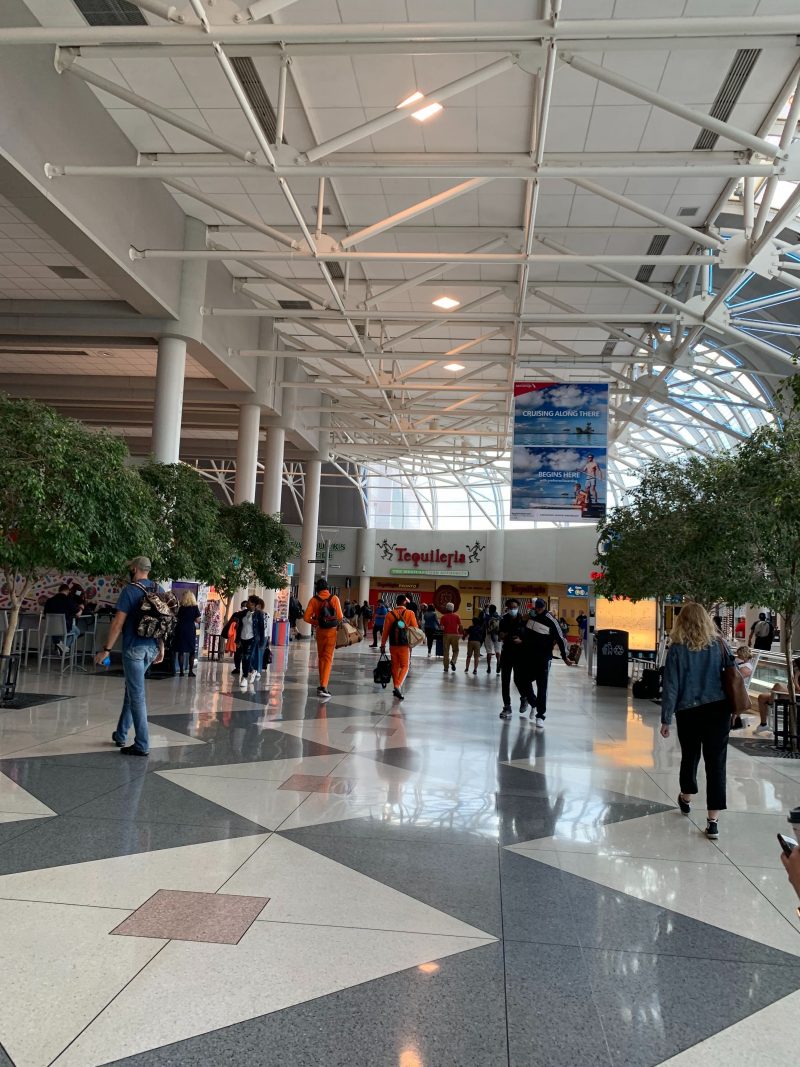
The dining area had not changed since my last trip at the beginning of March. There were no new seating arrangements to promote social distancing and very few signs on the floor as social distancing reminders.

If you have ever traveled through Charlotte (CLT), you might have seen a long line at Chick-fil-A. This time was no exception. Even though they had signage on the floor that read “6ft apart”, the line was so long that very few people were actually following the guidelines.
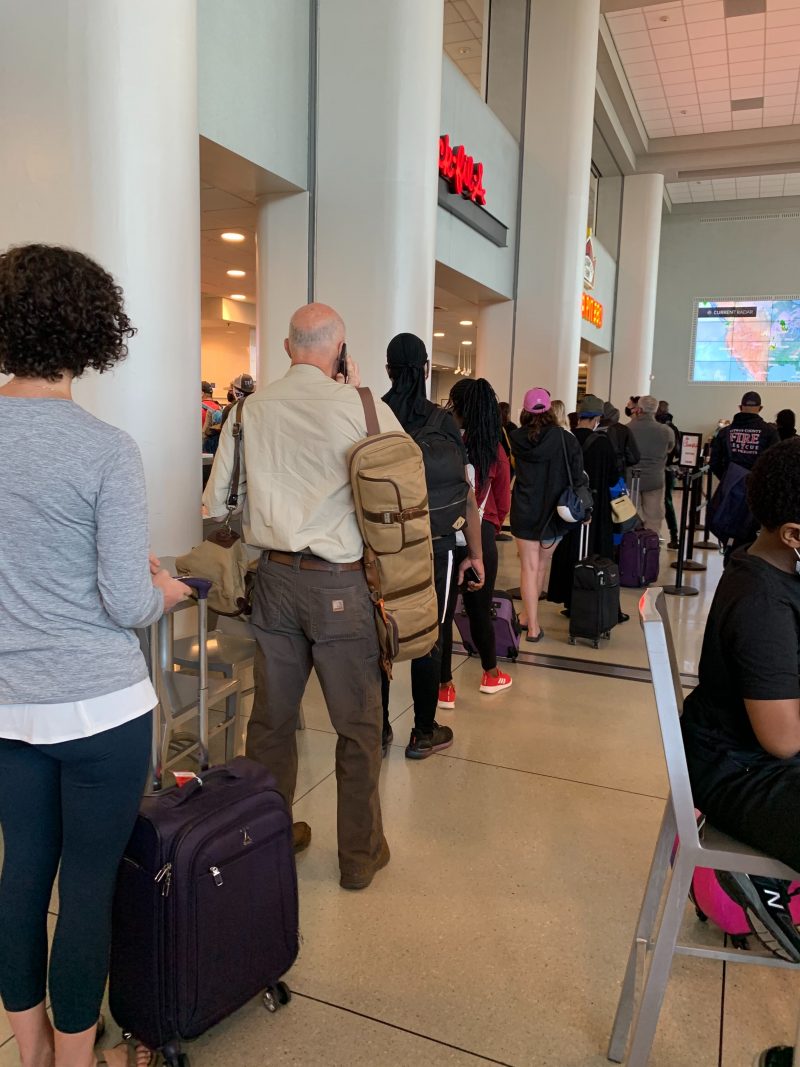
Once inside the terminal, some retail stores were closed, and in Concourse D, all restaurants were closed.
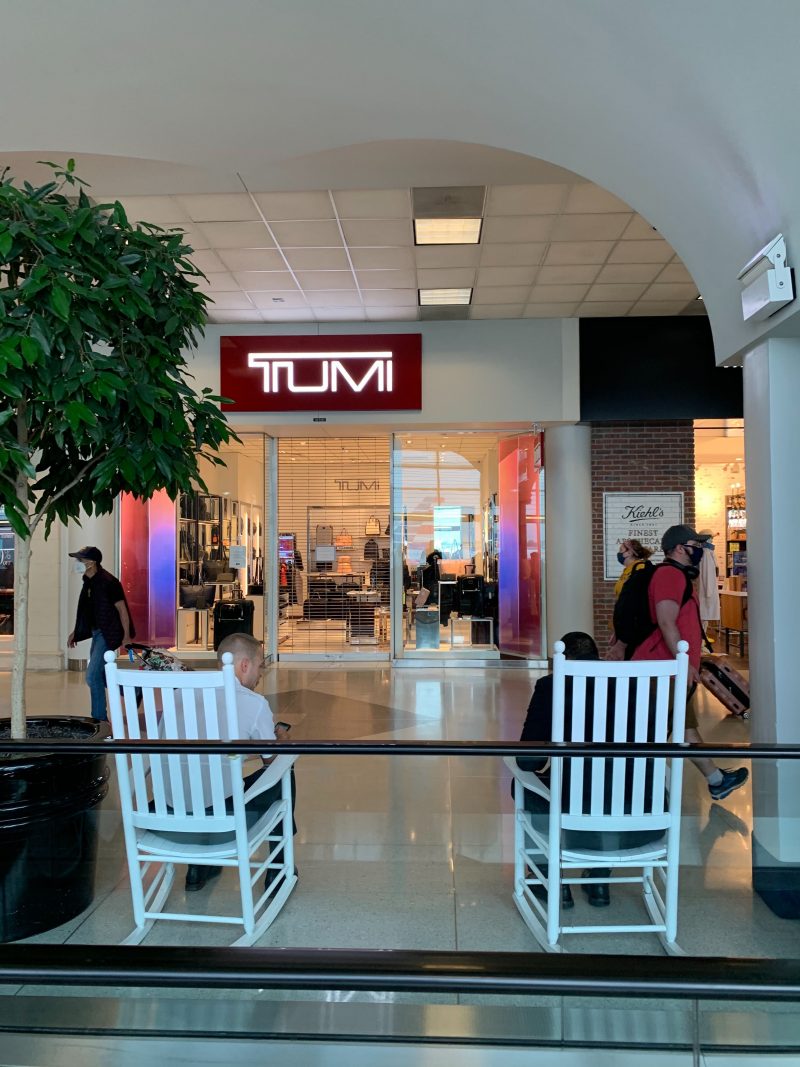
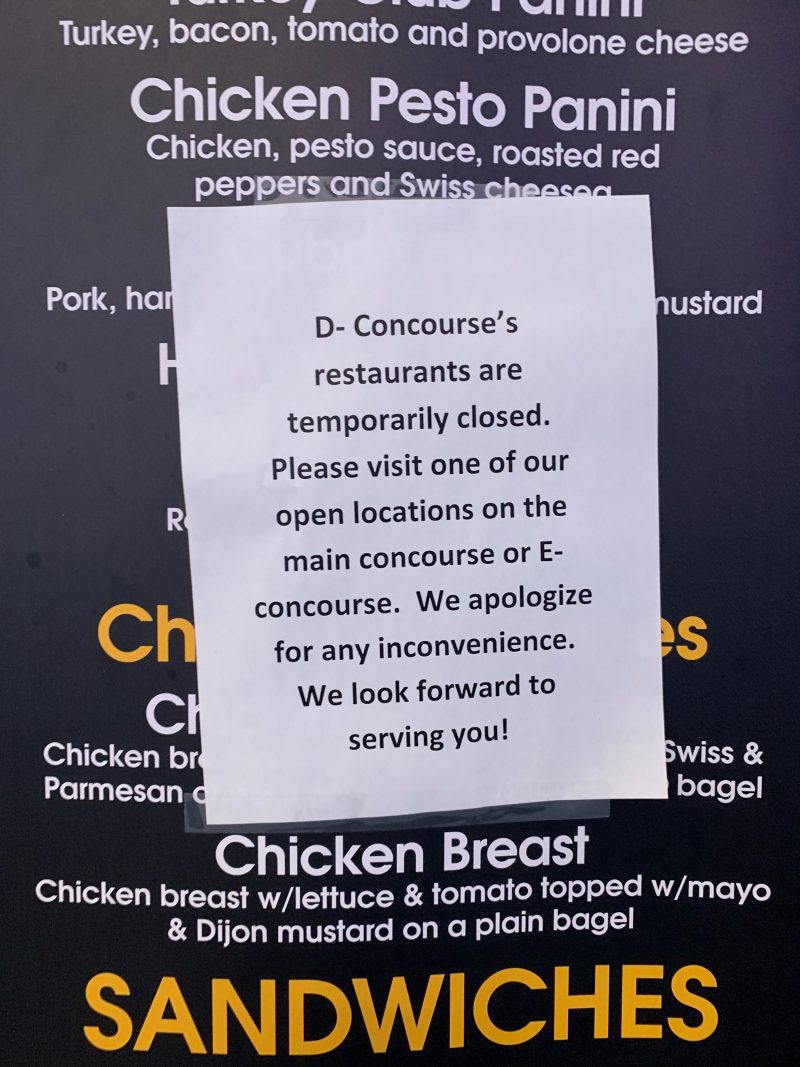
With mostly domestic flights — the exception being of a few flights to the Caribbean and Mexico — the departure boards seemed like a dream (at least compared to a typical pre-COVID day) with all flights on time. Still, I was surprised to so much activity given the world is in the middle of a pandemic.
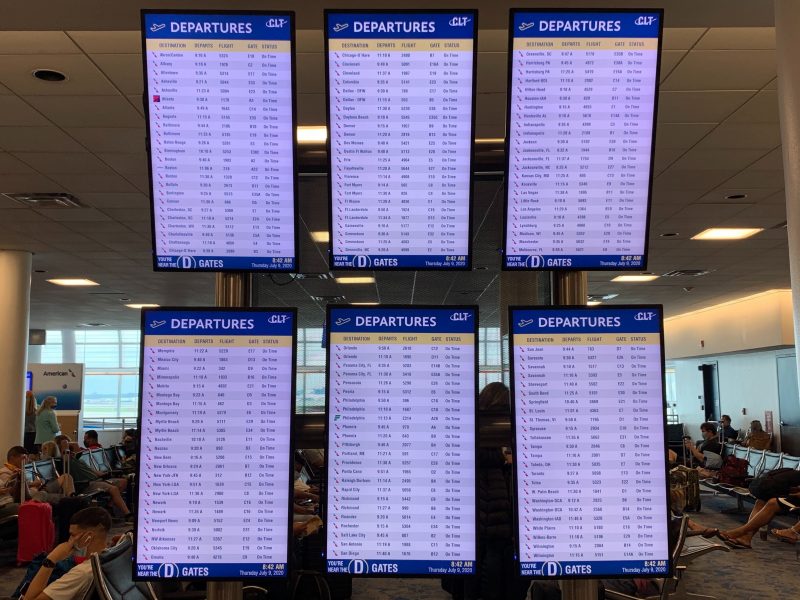
Finally, I was surprised by the lack of hand sanitizer stations around the terminal. Hand sanitizer is a necessity nowadays and even more so when you are in a place where people from across the country (and sometimes the world) are convening in one space.
Boarding process and in-flight experience
Many airlines have changed their boarding protocols and have implemented all kinds of precautions to ensure passengers’ safety against COVID 19. Airlines like Delta are blocking the middle seat, and JetBlue started boarding from back to front.
For an American Airlines flight, passengers must confirm that they have been free of COVID-19 symptoms for the past 14 days, and, like many other airlines, face coverings are required inside of the aircraft (except when eating or drinking).
Since the flight was fully booked, they were asking for volunteers to check-in their carry-ons, which I did, in an attempt to minimize my interactions inside the aircraft. American Airlines hadn’t changed their boarding process, so we were called forward by groups.
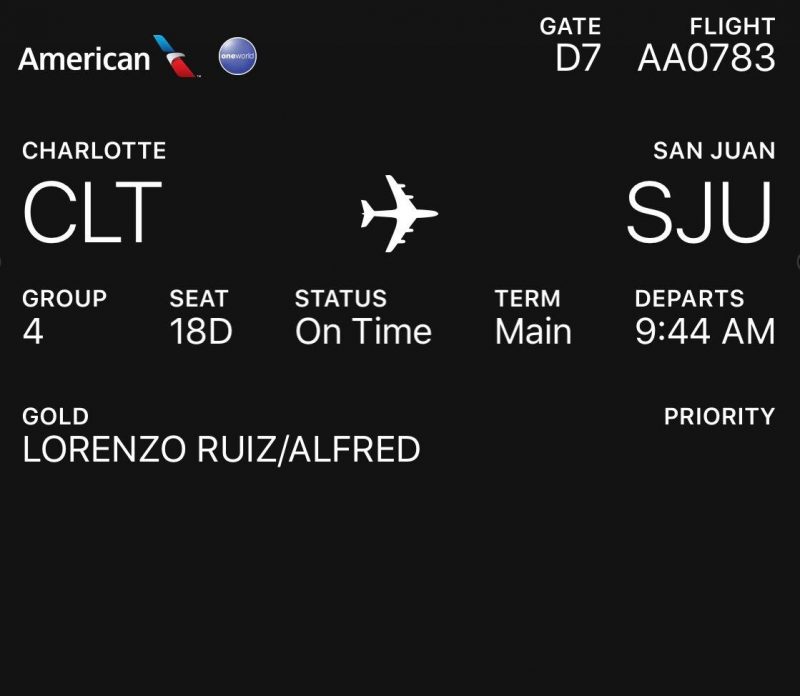
A few minutes after boarding commenced, they called maintenance to change a seat belt. We had to wait for around 20 minutes inside the boarding bridge, and once again, maintaining social distance was a challenge.
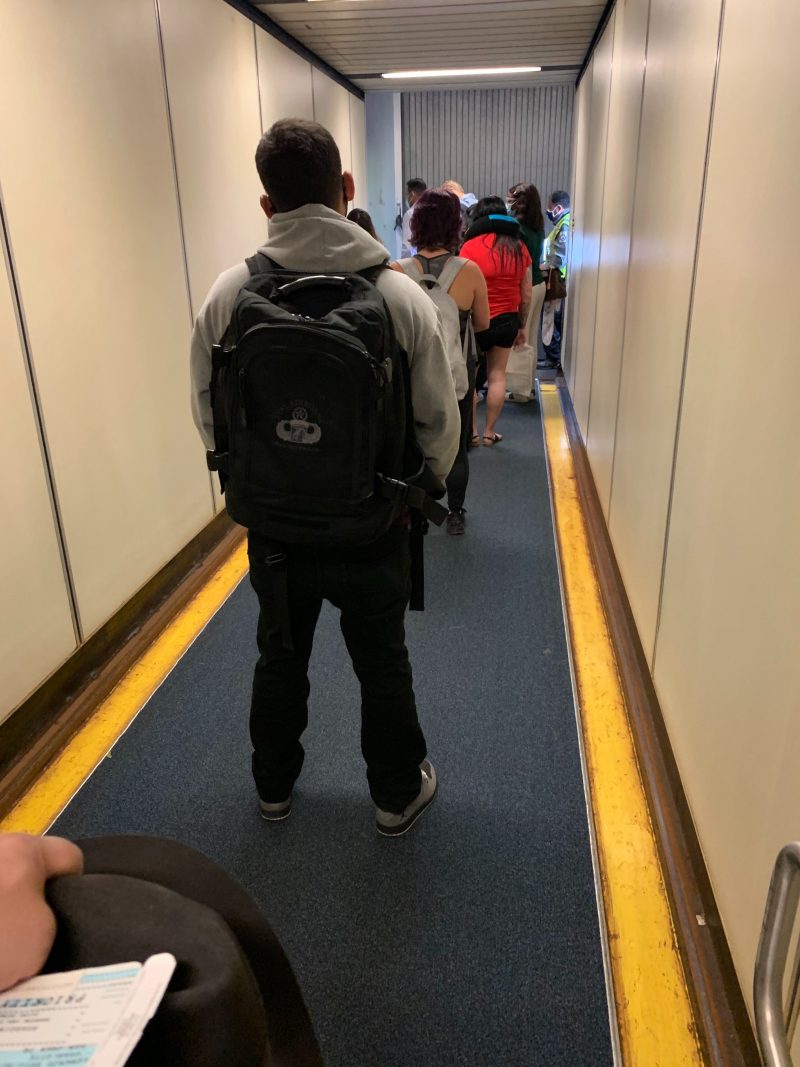
Once inside the aircraft, I was surprised by how clean everything was. The air smelled of cleaning products and the seats looked spotless. And once we landed, I spotted the cleaning crew wiping all seats and hard surfaces.

There wasn’t any sort of meal service during the flight. But during boarding, a pre-packaged bag with a bottle of water and cookies was given to all passengers.
Another thing that surprised me was to see magazines on each seat. I would have imagined these being one of the first things to be removed to minimize the risk of cross-contamination between flights.
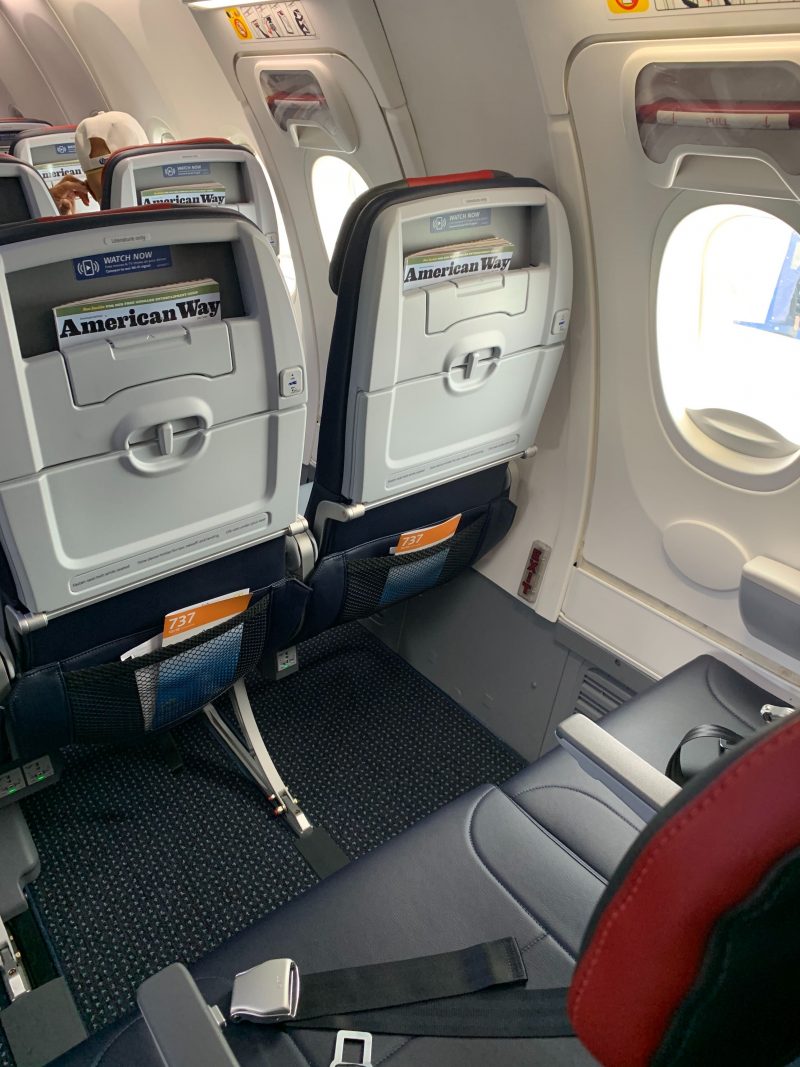
I was traveling with two friends and we were all able to sit in the same row. This helped us to “socially distance” (to a degree) from other passengers. With a full airplane and no structured boarding process, it was hard to feel safe inside the aircraft. But for the most part, the flight went well, and most passengers took the precautions they could.
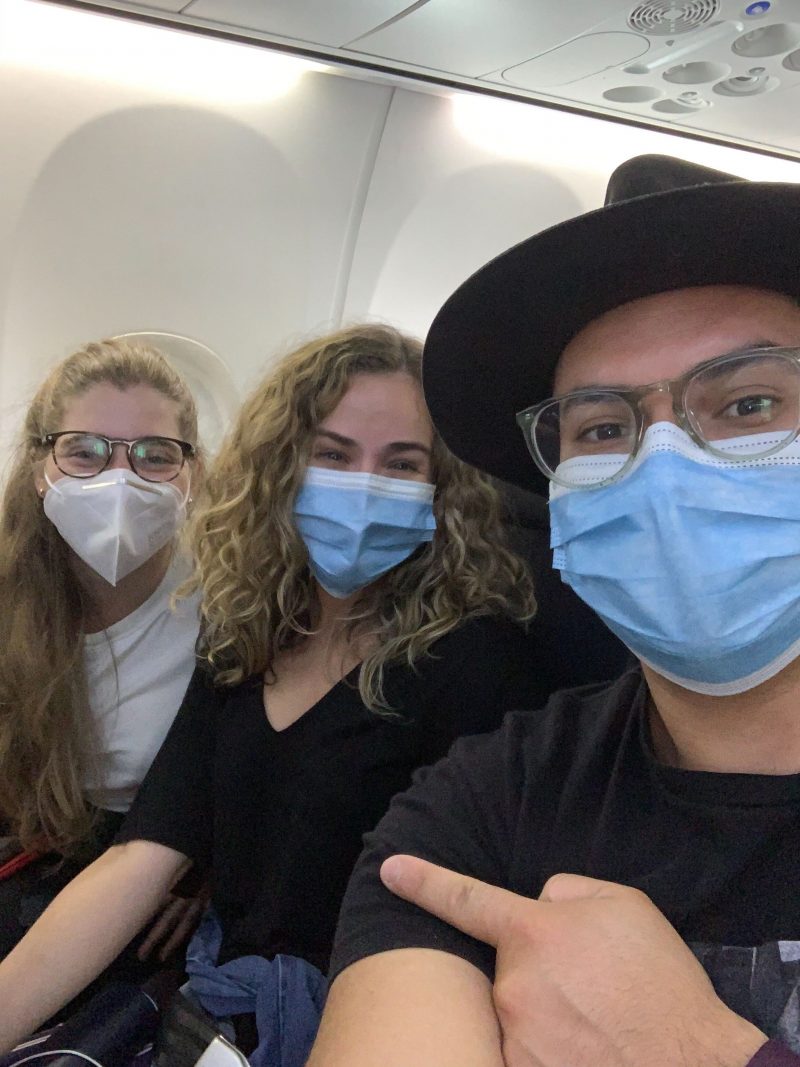
Arrival process
I don’t usually clap when airplanes land, but this time, it felt different. First of all, I was very excited to be home finally. And second, I really wanted this flight to be over.
Even though the flight was uneventful, I just could not stop thinking, “What if somebody has the virus? What happens if I get it and compromise my family?”
Similar to boarding, American Airlines did not have any particular protocol for de-planing. And yes, passengers from the back of the plane impatiently got in the aisle to try to get off first.
Once the aisle was clear, we de-planed, just as the cleaning crew was getting ready to sanitize the cabin and start the process all over.
Things in the Luis Munoz Marin Airport in San Juan looked a little bit different, too. Most airport stores were closed or only offering limited service. And right after leaving the terminal, a voluntary rapid COVID-19 testing station was set up.
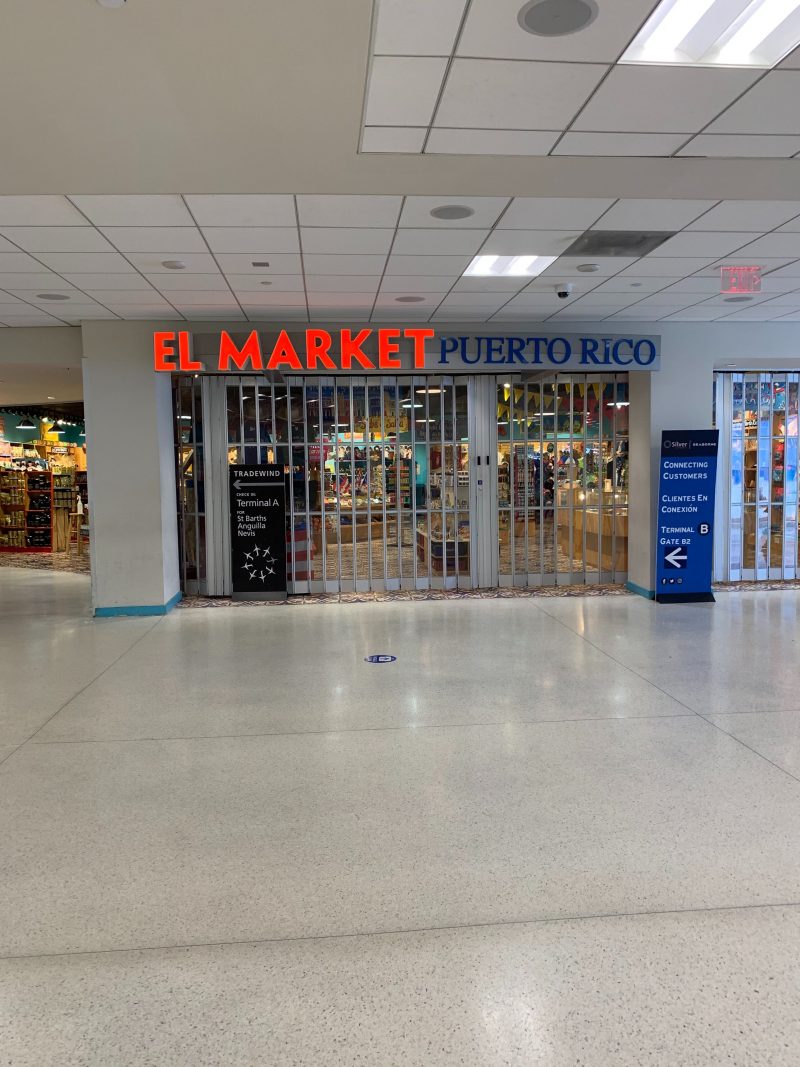
I decided to take one.
At the testing site, I was given a number and a form (to collect contact info and reason for traveling), and I was allowed to store my bags in the waiting area. Even though the test was complete in 20 minutes, with all the paperwork, I ended up waiting for almost an hour for my results.
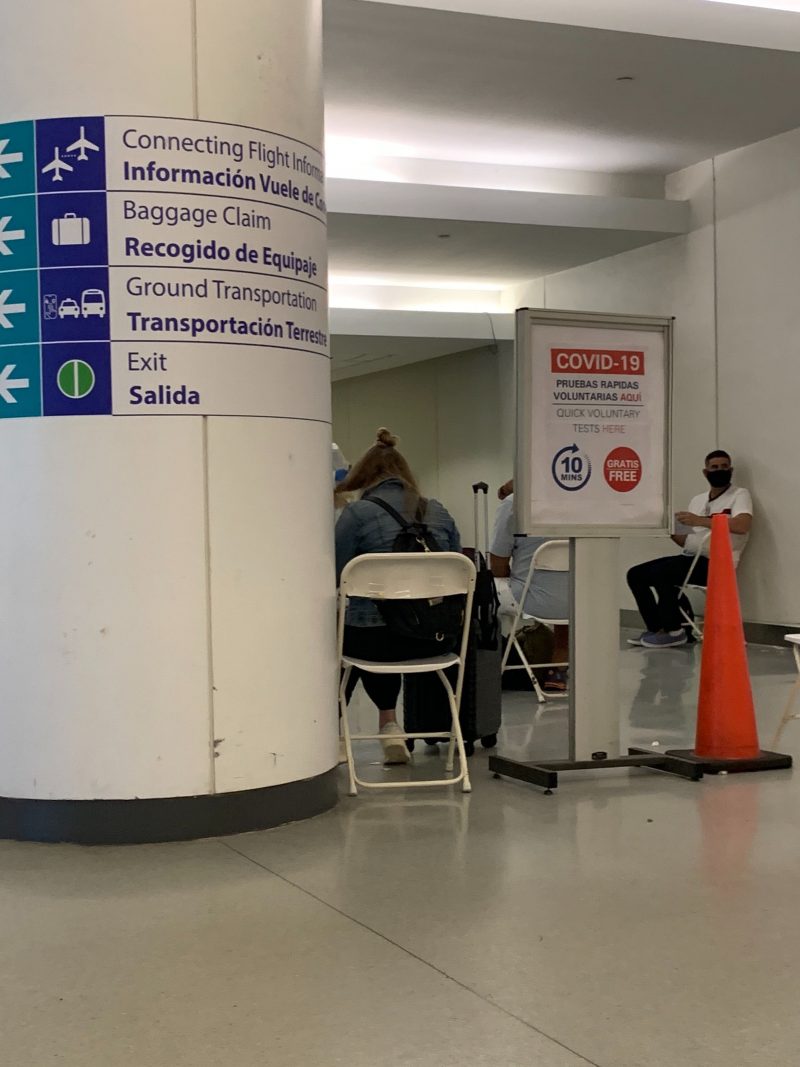
Those with negative test results were allowed to leave the airport with no more follow-ups. Passengers with positive results were being asked to take a molecular test and isolate themselves. And if you decided not to get a rapid COVID-19 test, you were still allowed to leave the airport after a quick interview.
Whether you took a test or not, everybody was being directed to the same exit, so the line was very long. Luckily, my results came out negative, so I was allowed to leave without taking an additional test.
Please note: On July 15, Puerto Rico reopened for tourism with new procedures in place. Arriving passengers must now complete a travel declaration form from the Puerto Rico Health Department, as well as demonstrate a negative molecular COVID-19 test taken within 72 hours of arrival in order to visit the island. You can read the details of the new protocols here.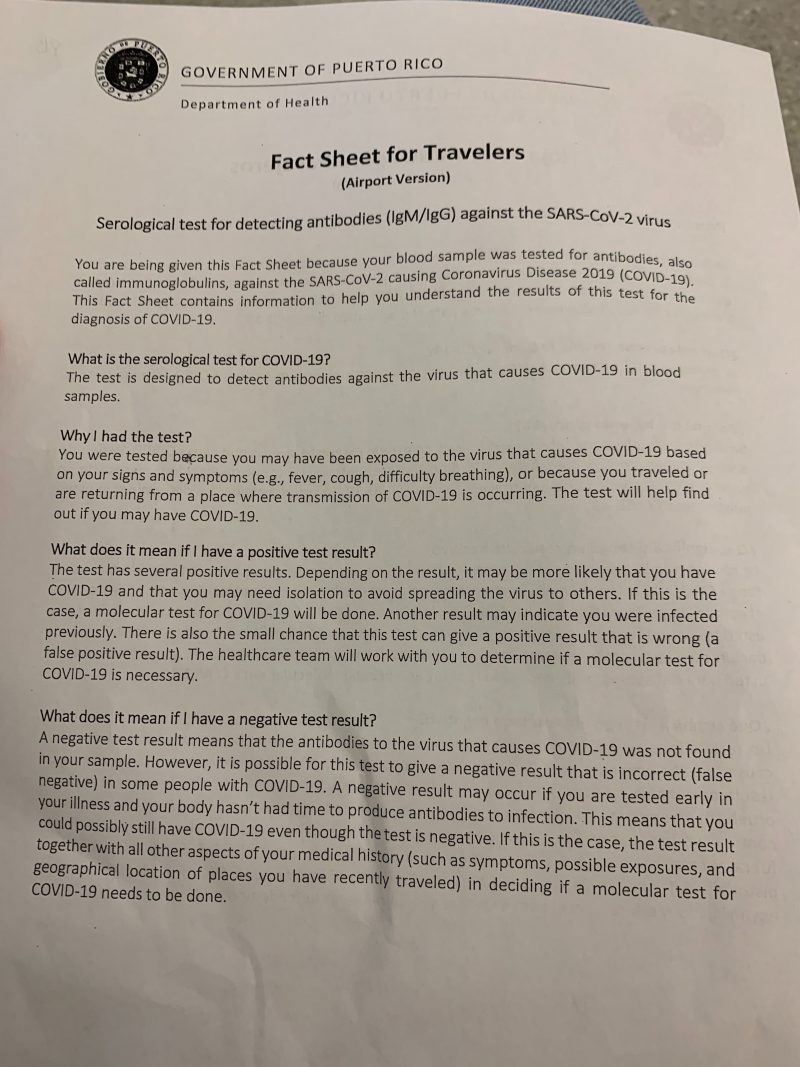
Bottom line
Traveling in the midst of a pandemic was not a pleasant experience. Even though I followed CDC guidelines and tried to stay socially distanced from other travelers, doing so was nearly impossible. Honestly, I wouldn’t recommend flying unless it is absolutely necessary.
Airline and airport employees are doing their best to take the appropriate precautions. But it’s incredibly difficult to maintain social distancing on a full flight or in a packed terminal. So if you can, I’d suggest flying during off-peak times or booking tickets with an airline that’s blocking middle seats.
I am grateful that I made it safely to Puerto Rico, and I look forward to resuming traveling again someday. But only when we’re out of this period of uncertainty we are living in now.
I know we will recover from this, even though the travel industry will change. But for now, I hope we will all do our part to help stop the spread of the virus.
All photos by the author.Editorial Note: We're the Million Mile Secrets team. And we're proud of our content, opinions and analysis, and of our reader's comments. These haven’t been reviewed, approved or endorsed by any of the airlines, hotels, or credit card issuers which we often write about. And that’s just how we like it! :)
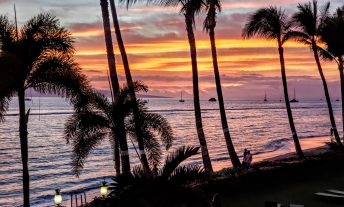
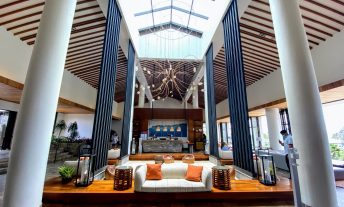




Join the Discussion!